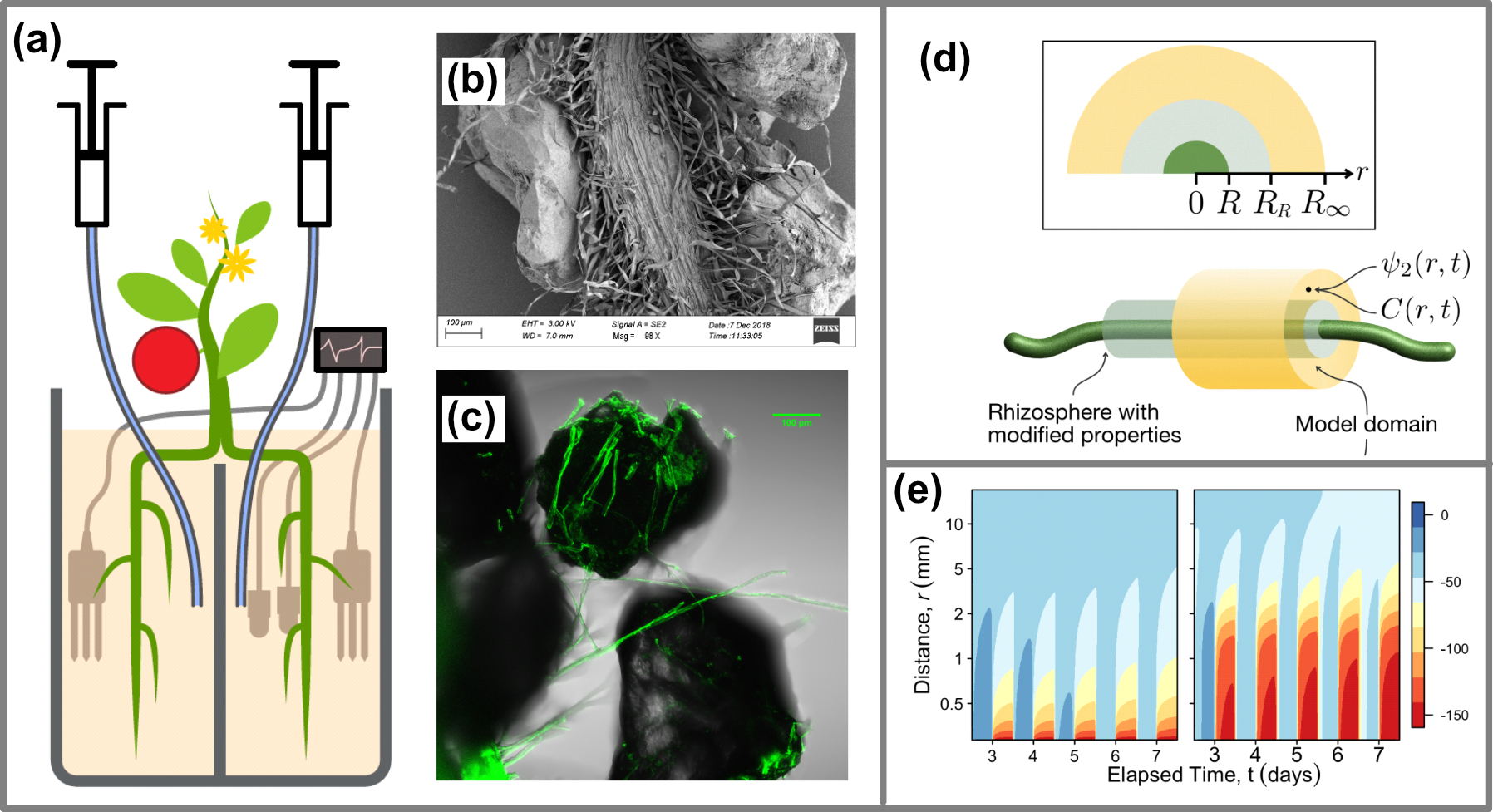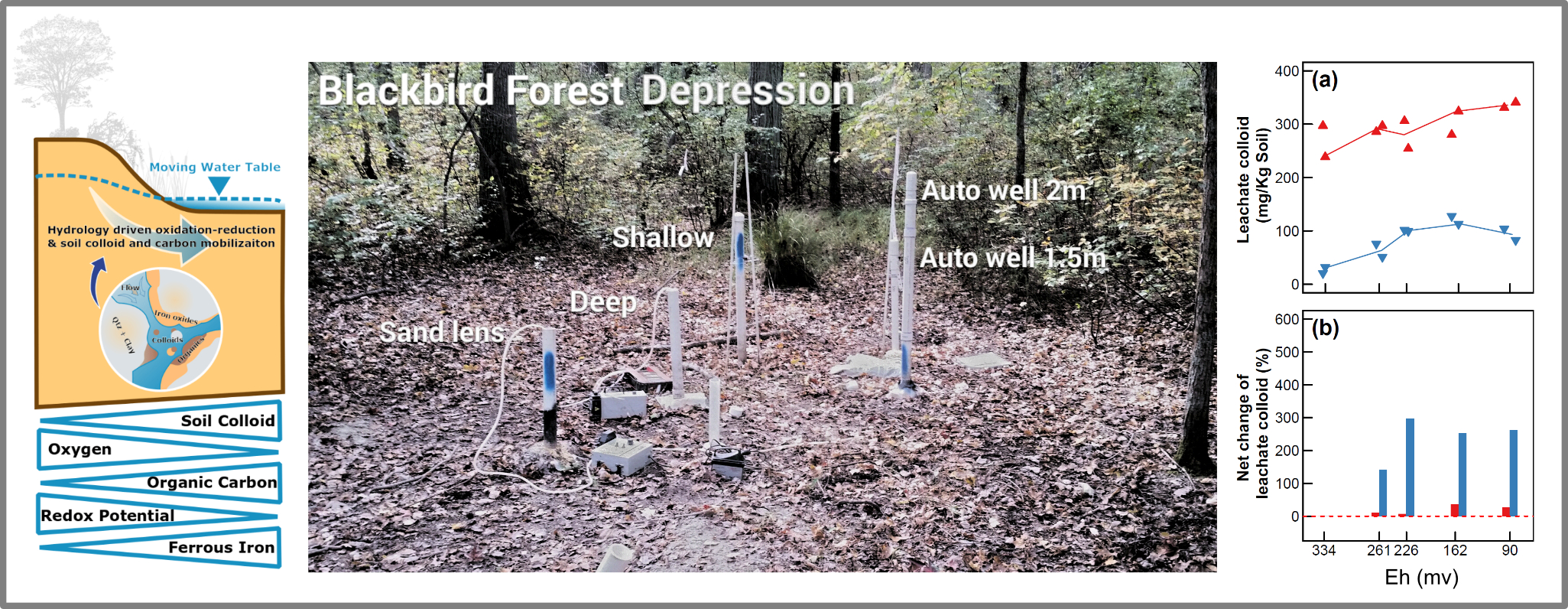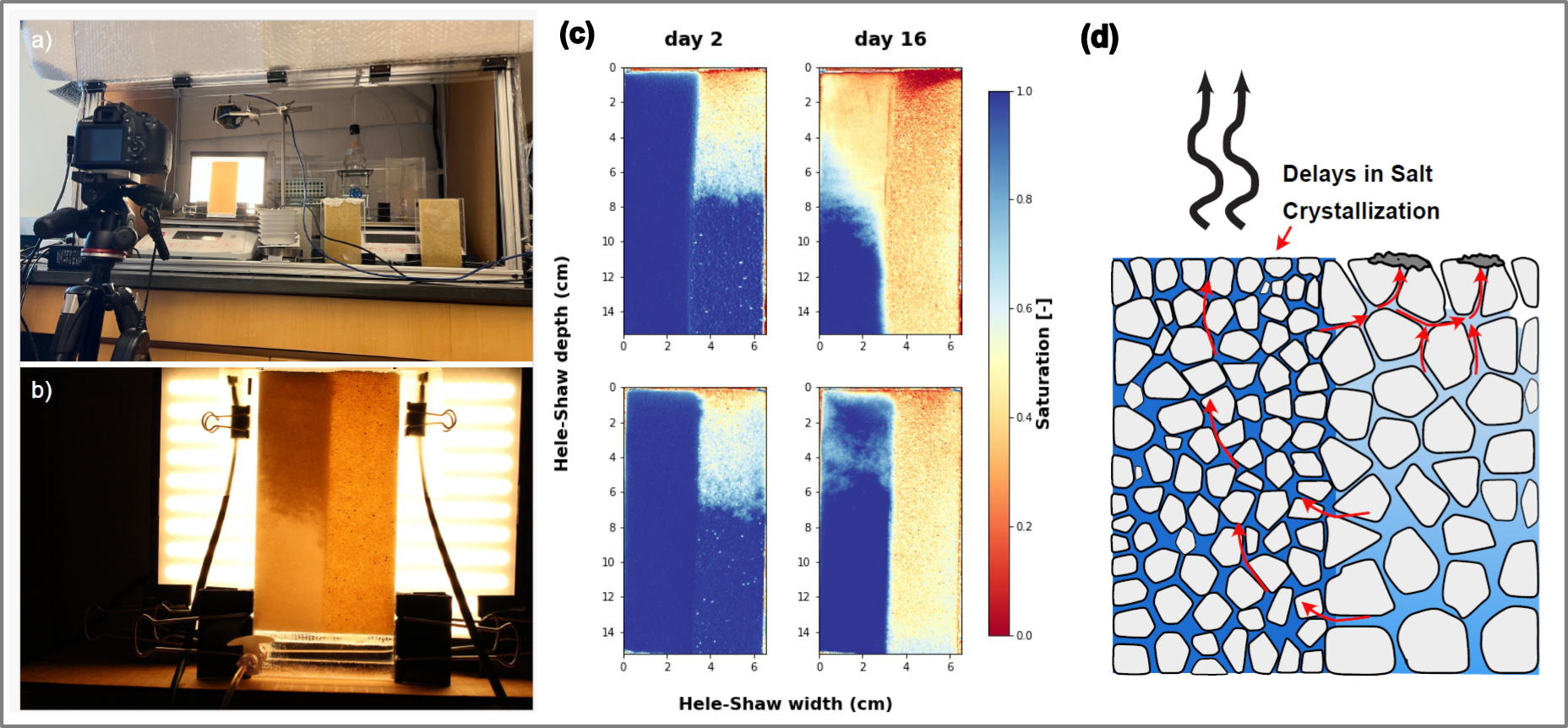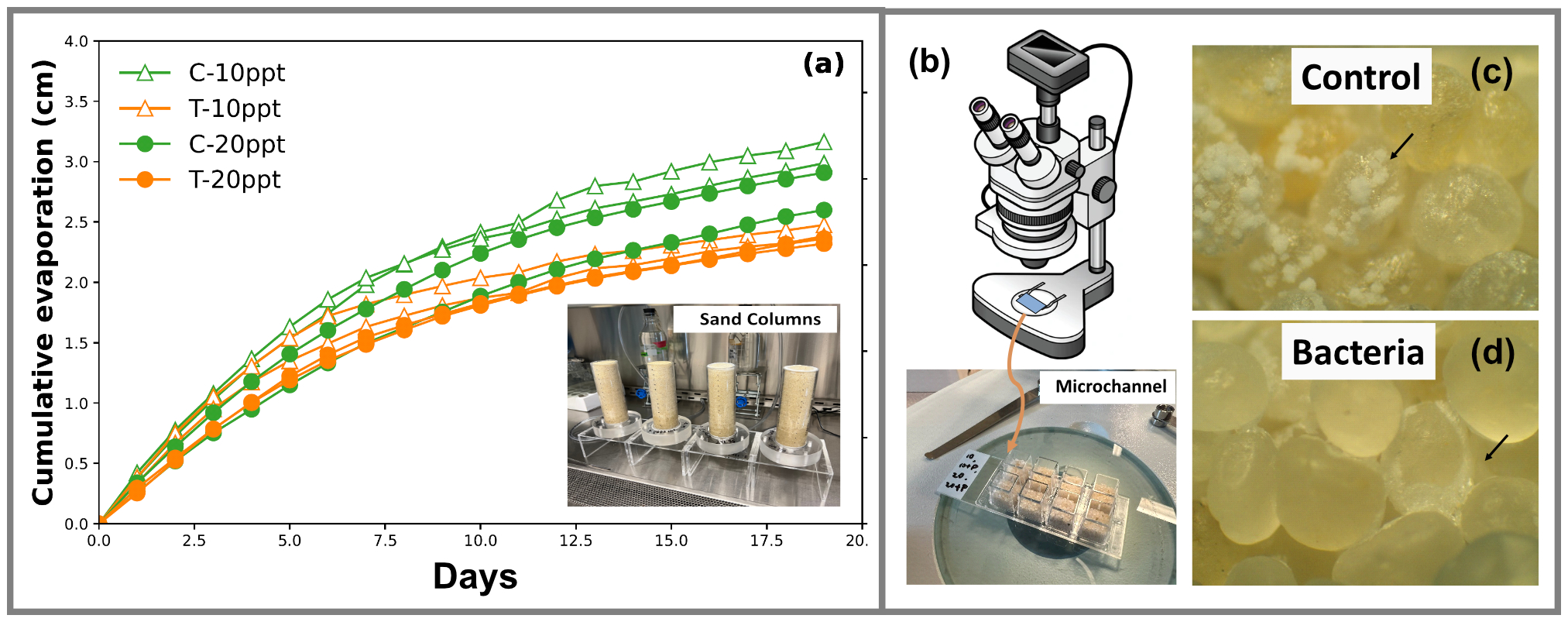Research
1. Rhizosphere Water and Nutrient Dynamics

Nature-inspired rhizosphere engineering: advance sustainable agriculture by harnessing natural plant adaptations, such as hydraulic redistribution (HR). We investigate root plasticity in response to soil water and nutrient heterogeneity through experiments and mathematical modeling, revealing how plants optimize resource uptake. A key focus is understanding how root-driven changes in rhizosphere soil properties regulate water and nutrient dynamics across scales—from pore-level processes to field-scale outcomes—to improve resilience in agroecosystems.
2. Colloid-Facilitated Transport and Carbon Cycling

Nano-sized colloids and carbon cycling: We investigate the fate and transport of nano-sized soil colloids, which are critical but often overlooked in carbon and nutrient cycling. Combining lab experiments with field studies, we examine how redox dynamics (e.g., in wetlands) drive colloid release and mobility. A key focus is nano-sized colloidal organic carbon, an understudied carbon pool traditionally misclassified as ‘dissolved,’ to quantify its role in global carbon budgets and biogeochemical processes.
3. Saltwater Evaporation in Porous Media

Seawater intrusion and evaporation dynamics: By combining experimental and modeling approaches, we reveal how structural heterogeneities, such as macropores and vertical textural contrasts, control salt accumulation patterns and saltwater evaporation. This work provides mechanistic insights critical for predicting coastal soil salinization and managing agricultural lands affected by saltwater intrusion.
—
4. Soil-Plant-Microbe Interactions

Microbial regulation of pore-scale water dynamics: Soil microbes actively shape water movement and retention through their physical and biochemical interactions with soil structure. we study how microbial activity alters pore-scale water films, modifies evaporation patterns, and influences solute distribution—key processes controlling soil moisture availability. These findings highlight the untapped potential of soil microorganisms as natural regulators of water dynamics, offering new avenues to improve water conservation and resilience in agricultural and natural ecosystems.
5. Modeling of soil functions at different scales
Our research employs multi-scale modeling approaches—from rhizosphere-scale processes to regional-scale predictions—to understand and optimize soil-plant-water systems. We develop mechanistic models to test hypotheses about fundamental interactions, then scale these insights to generate practical solutions for agricultural and environmental challenges.